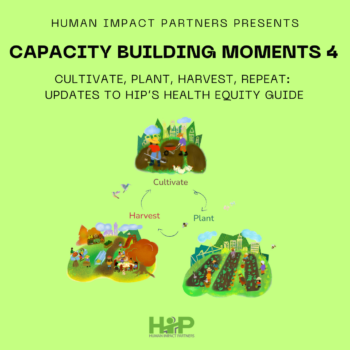| By Jonathan Heller |
There is a growing awareness, both within and outside of the public health community, that where you live – down to your ZIP code – determines how healthy you are and how long you live. A study released this week looks at the reasons why this is the case, especially for children.
The study, by Raj Chetty and Nathaniel Hendren from Harvard, found that when a child from a low-income family moves from a low-income community to a higher-income community, they have a better chance of escaping poverty in their lifetime. The younger the child is when she or he moves, the more likely they are to achieve upward mobility.
According to The New York Times, “All else equal, low-income boys who grow up in [very low-income] areas earn about 35 percent less on average than otherwise similar low-income children who grow up in the best areas for mobility. For girls, the gap is closer to 25 percent.”
The higher-income communities that these children are moving to tend to have “less segregation by income and race, lower levels of income inequality, better schools, lower rates of violent crime, and a larger share of two-parent households.” Lower-income cities, many of which are highly segregated, tend to have the opposite social and economic conditions and can drag children down. These and similar factors are at the root of the protests that have roiled Baltimore over the last two weeks.
The research, based on the income outcomes of more than five million children who moved, shows that the place one lives actually causes these impacts. As Emily Badger puts in the Washington Post, “It’s not simply that successful families chose to live in Fairfax and unsuccessful ones pick Baltimore. Baltimore itself appears to be acting on poor children, constraining their opportunity, molding them over time into the kind of adults who will likely remain deeply poor.”
The researchers also found that the age at which children moved predicted their likelihood of becoming single parents and of going to college.
Such moves also have health impacts. Kids that move to higher-income neighborhoods have better access to resources that support health, like good schools and parks. We know that an adequate income is critical for both physical and mental. Higher income correlates with lifespan, self-rated health, chronic disease rates, and stress.
So, what do we do with this information? The answer can’t be that all low-income families should move to higher-income communities. That is not realistic or feasible, and we should not put this burden on the backs of these families. Instead, this should prompt more investment in low-income communities so that they become high-opportunity areas, with all the benefits and supports that go along with that status. We must work to reduce segregation and income inequality and improve schools in these communities. We should be investing in low-income communities to rebuild their local economies and provide access to jobs and wealth-building opportunities.
Such initiatives will not only address the crises in cities like Baltimore, but are the best things we can do to do improve health and reduce inequities.




